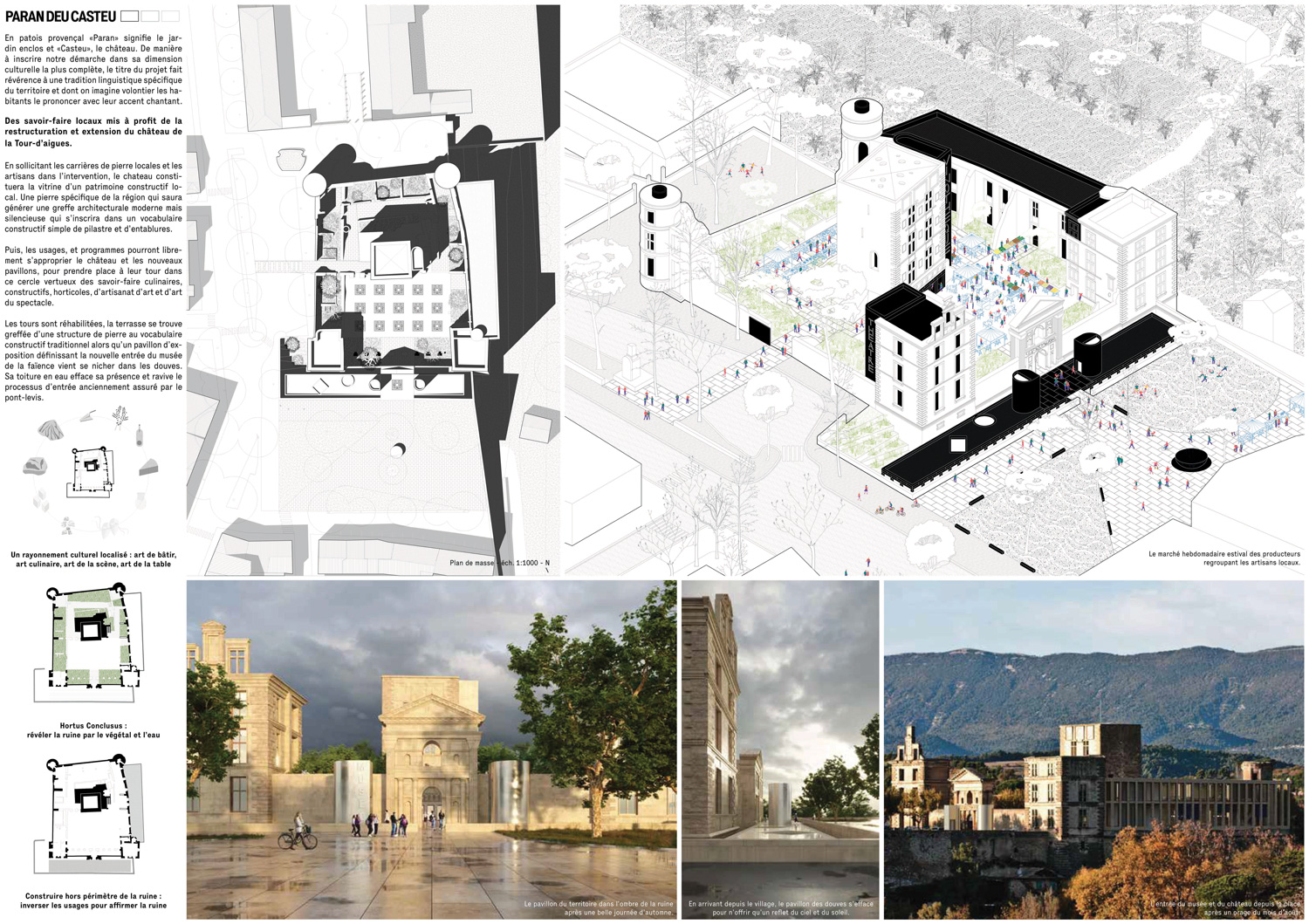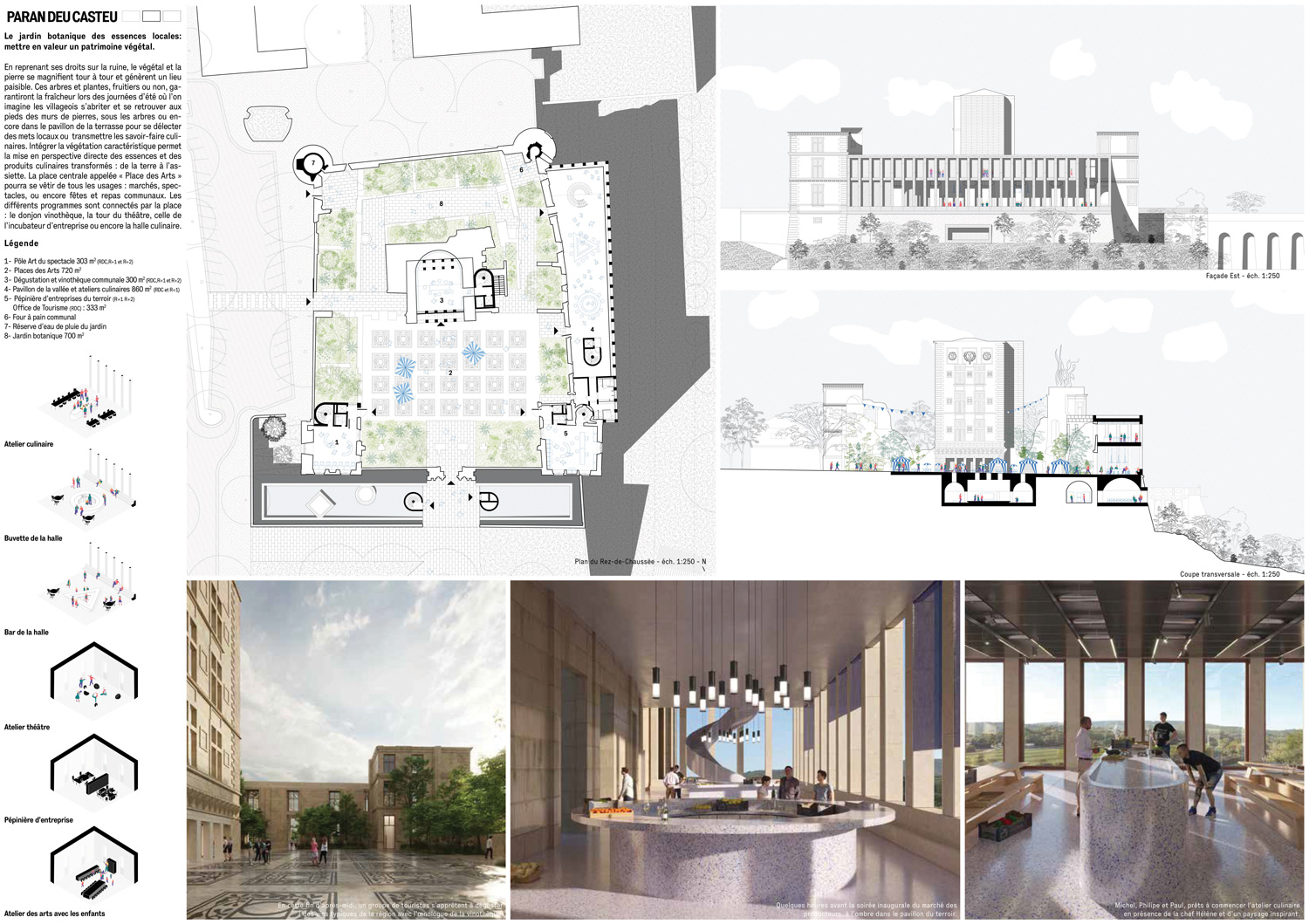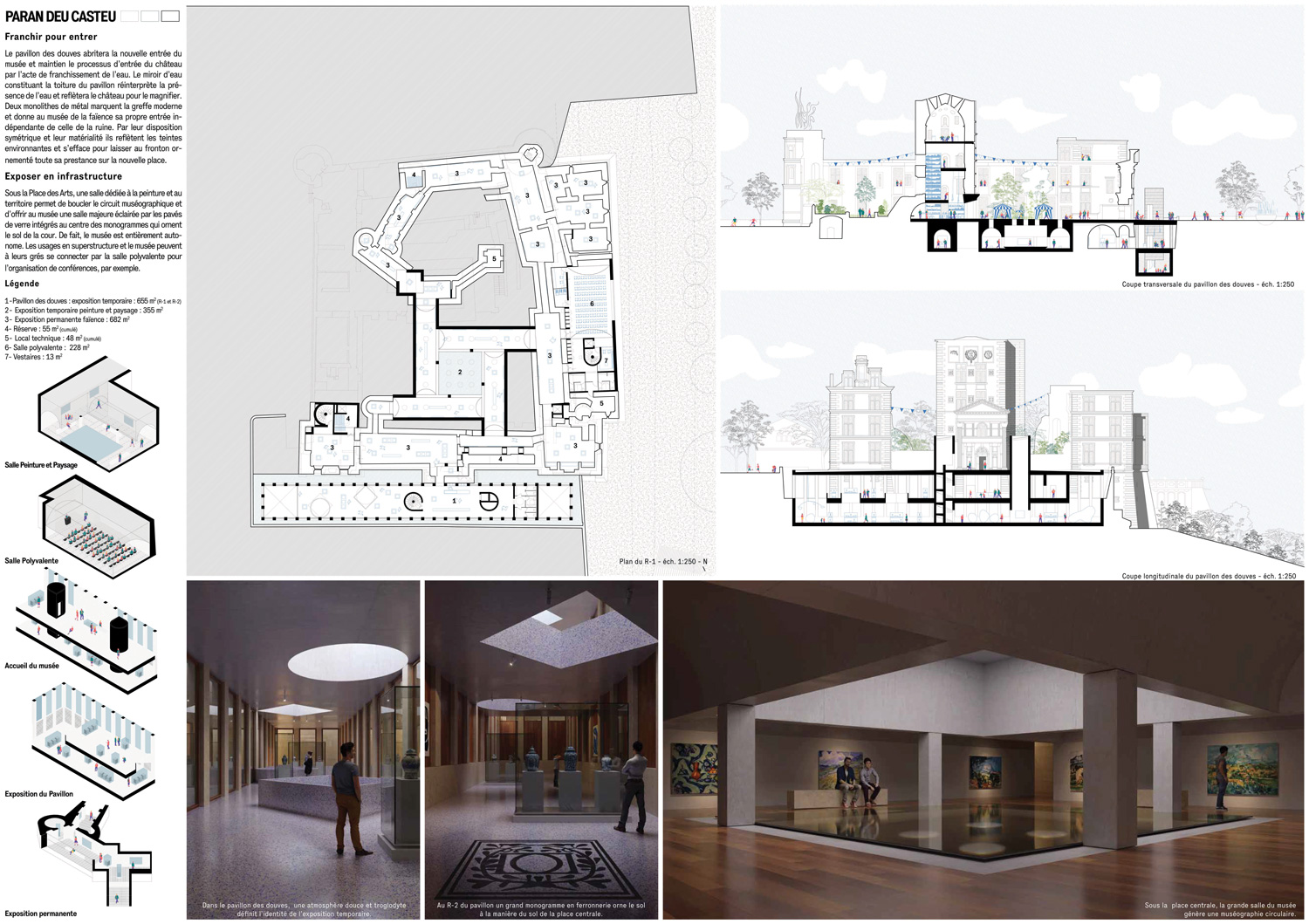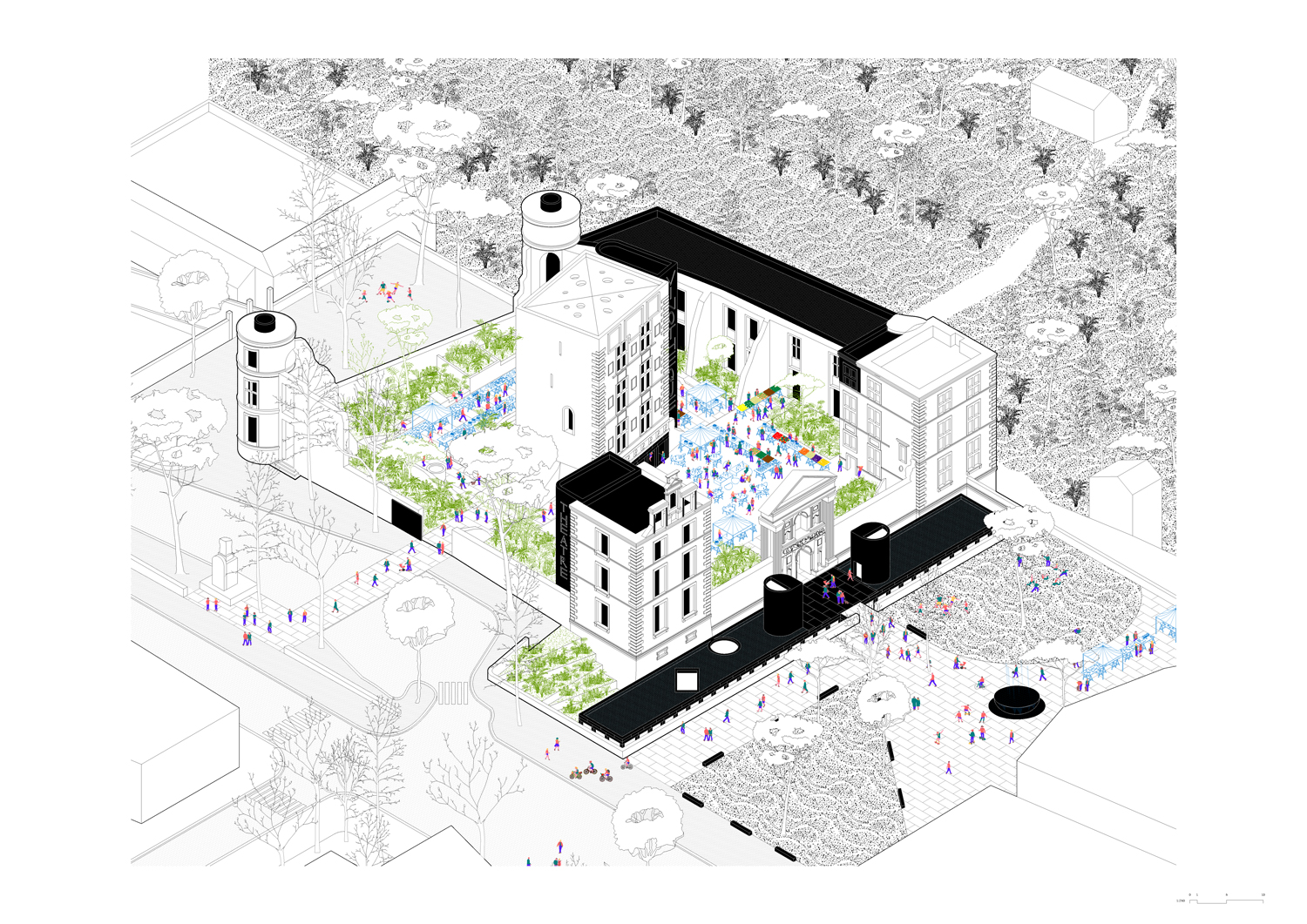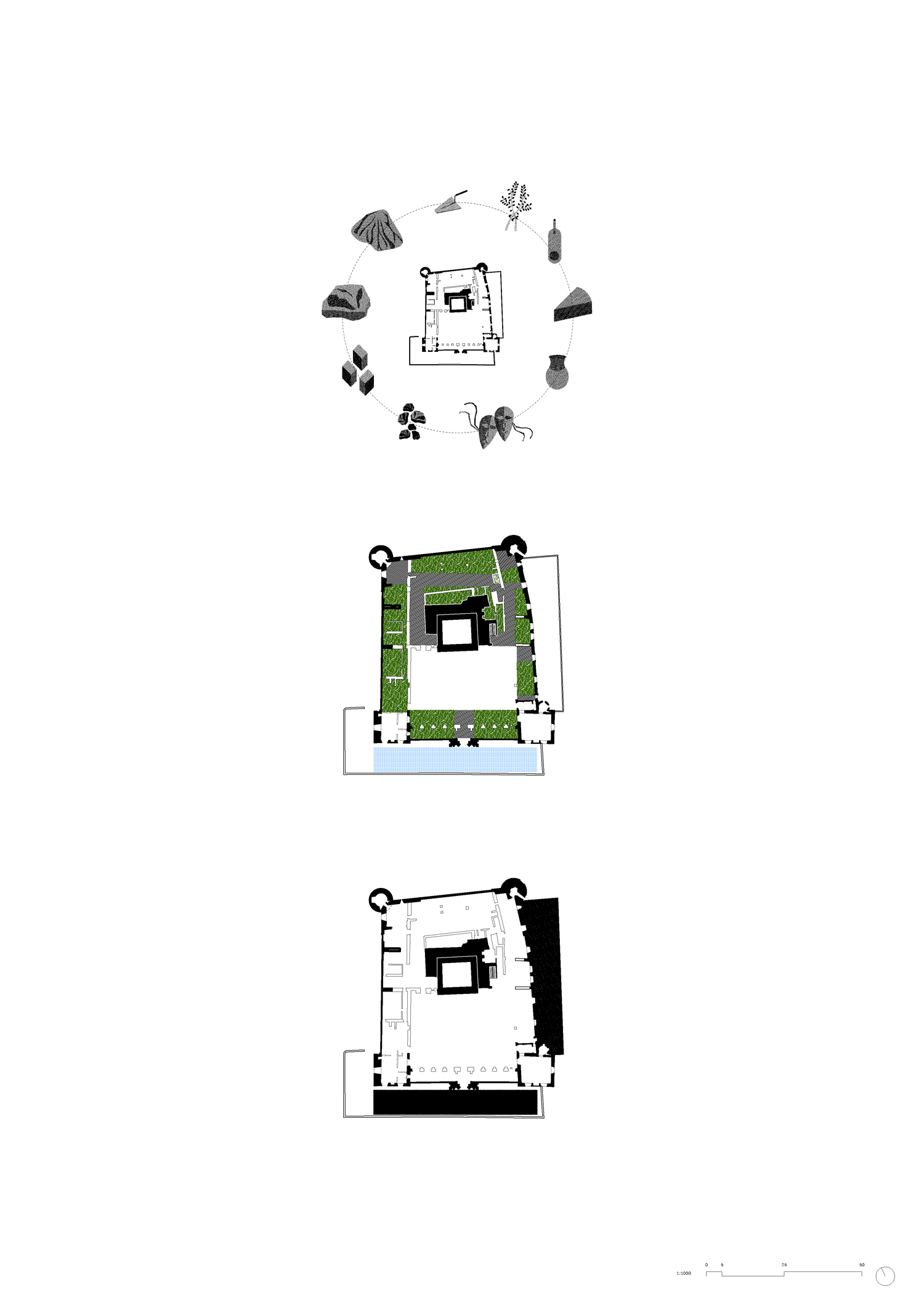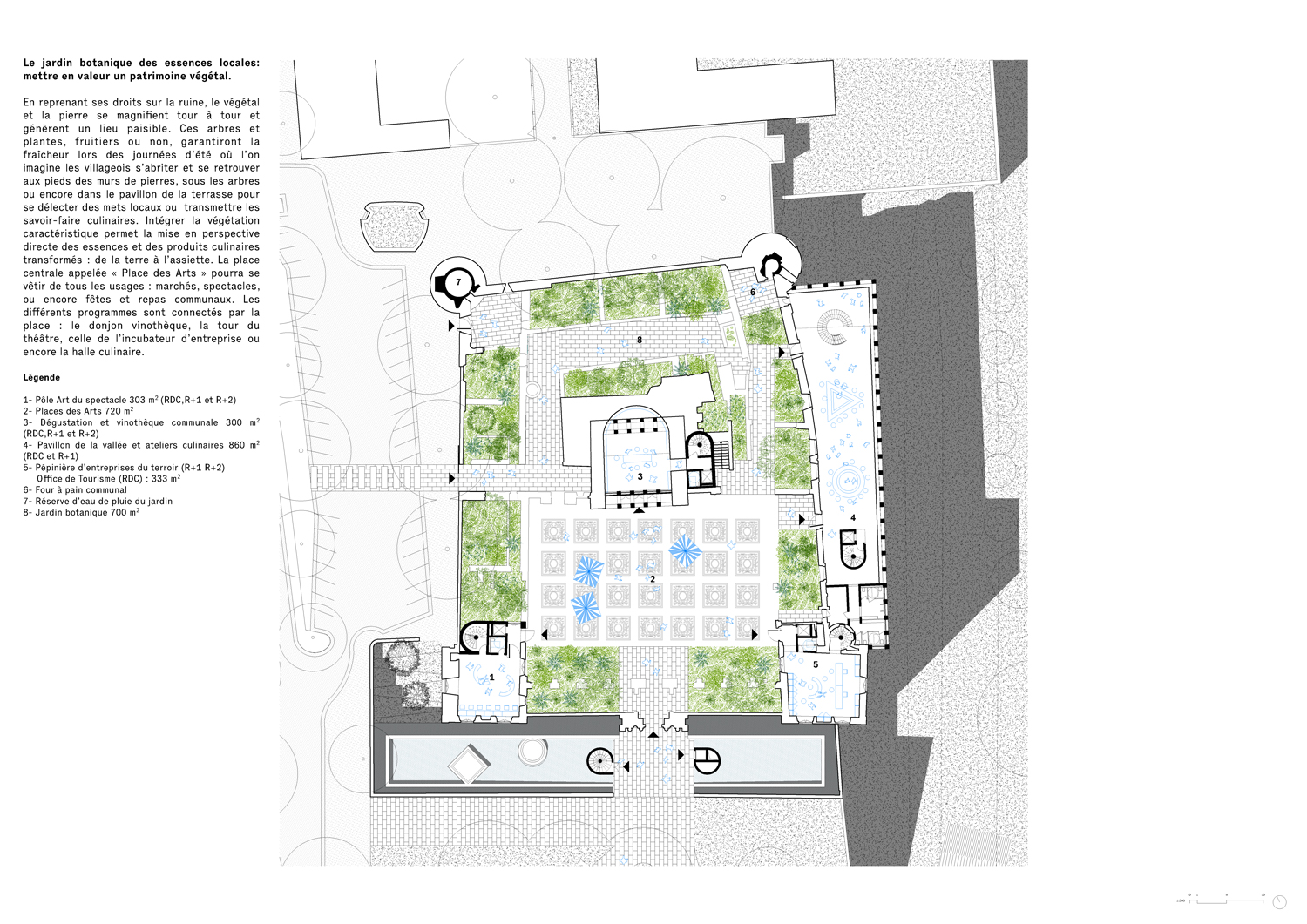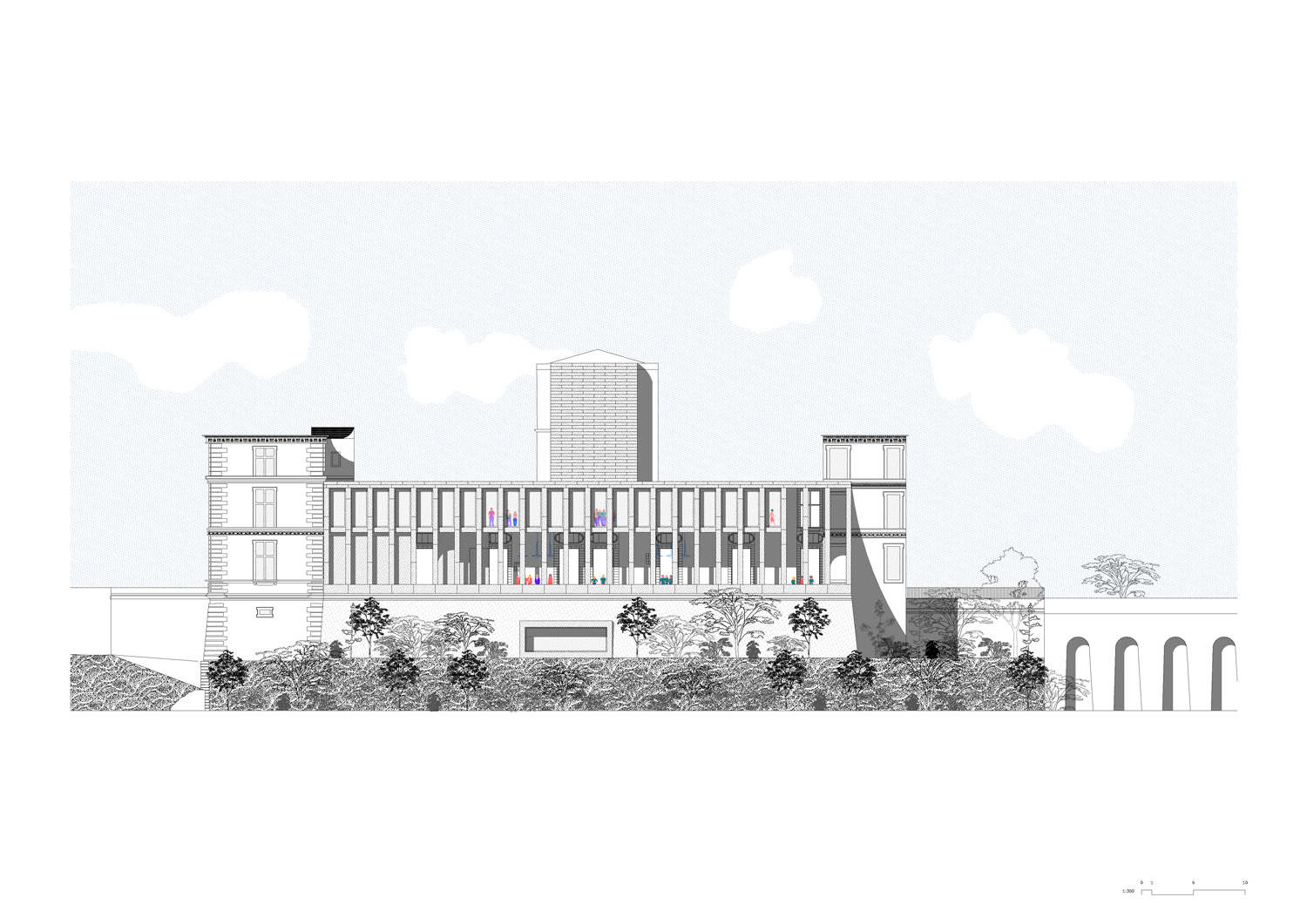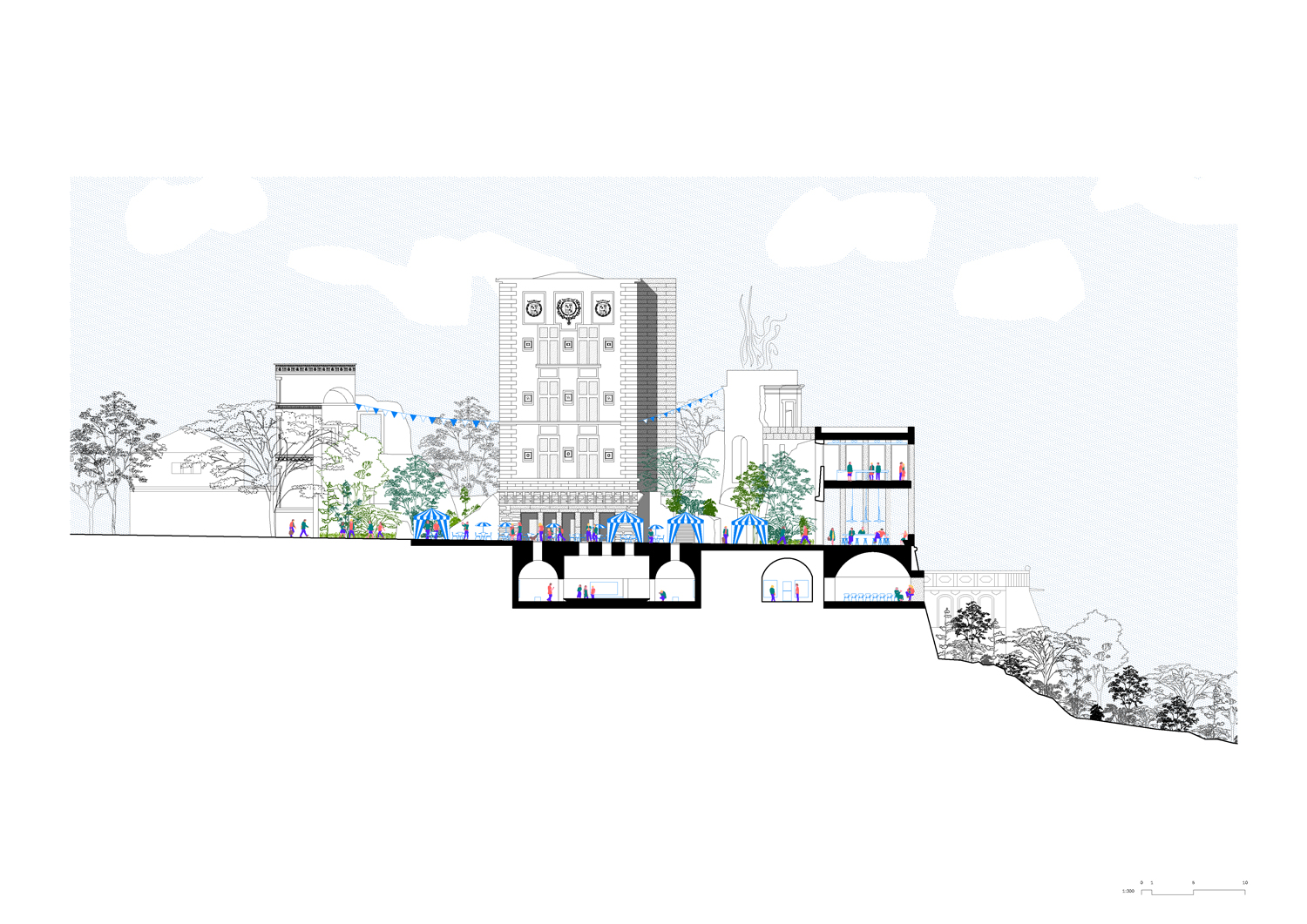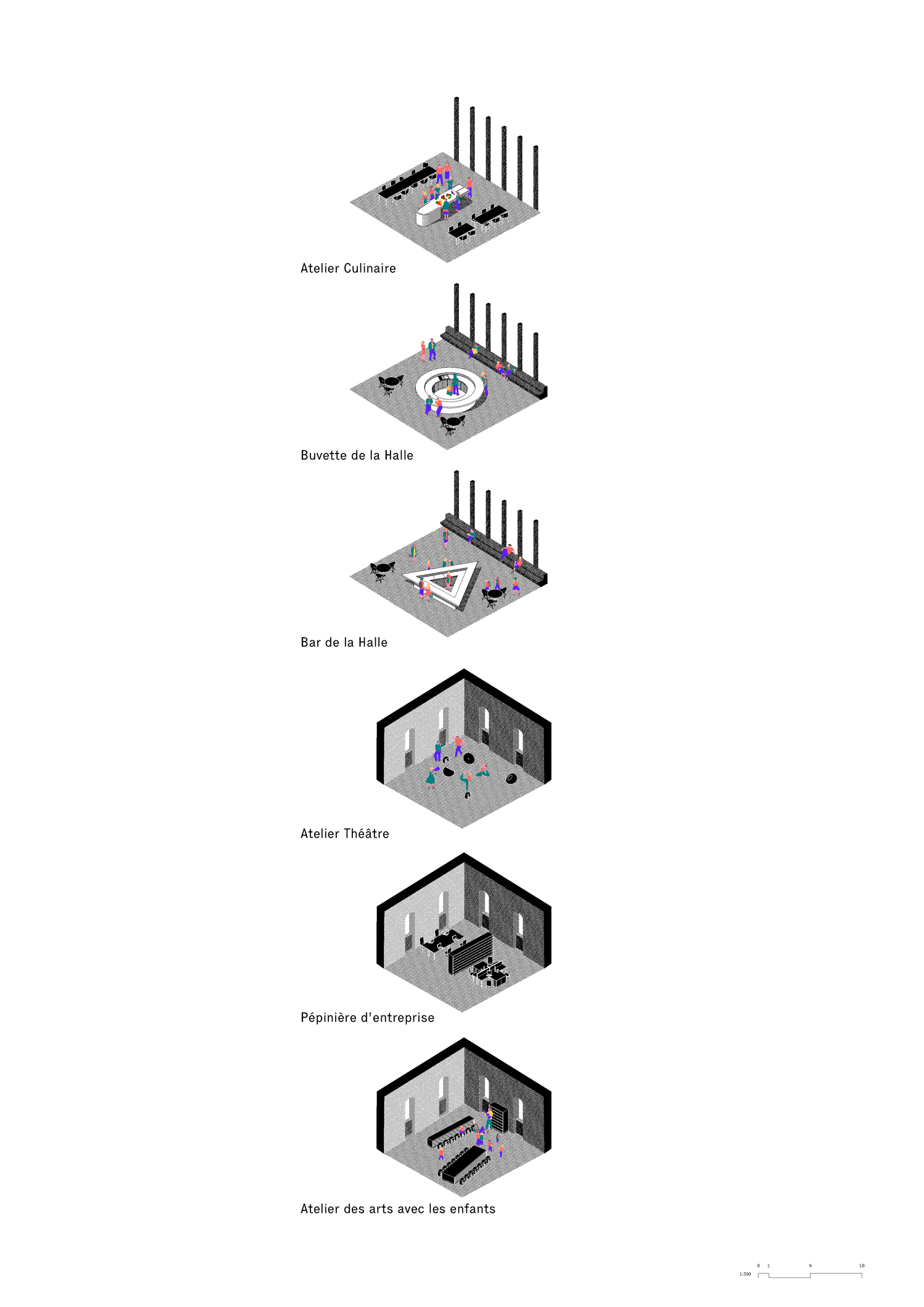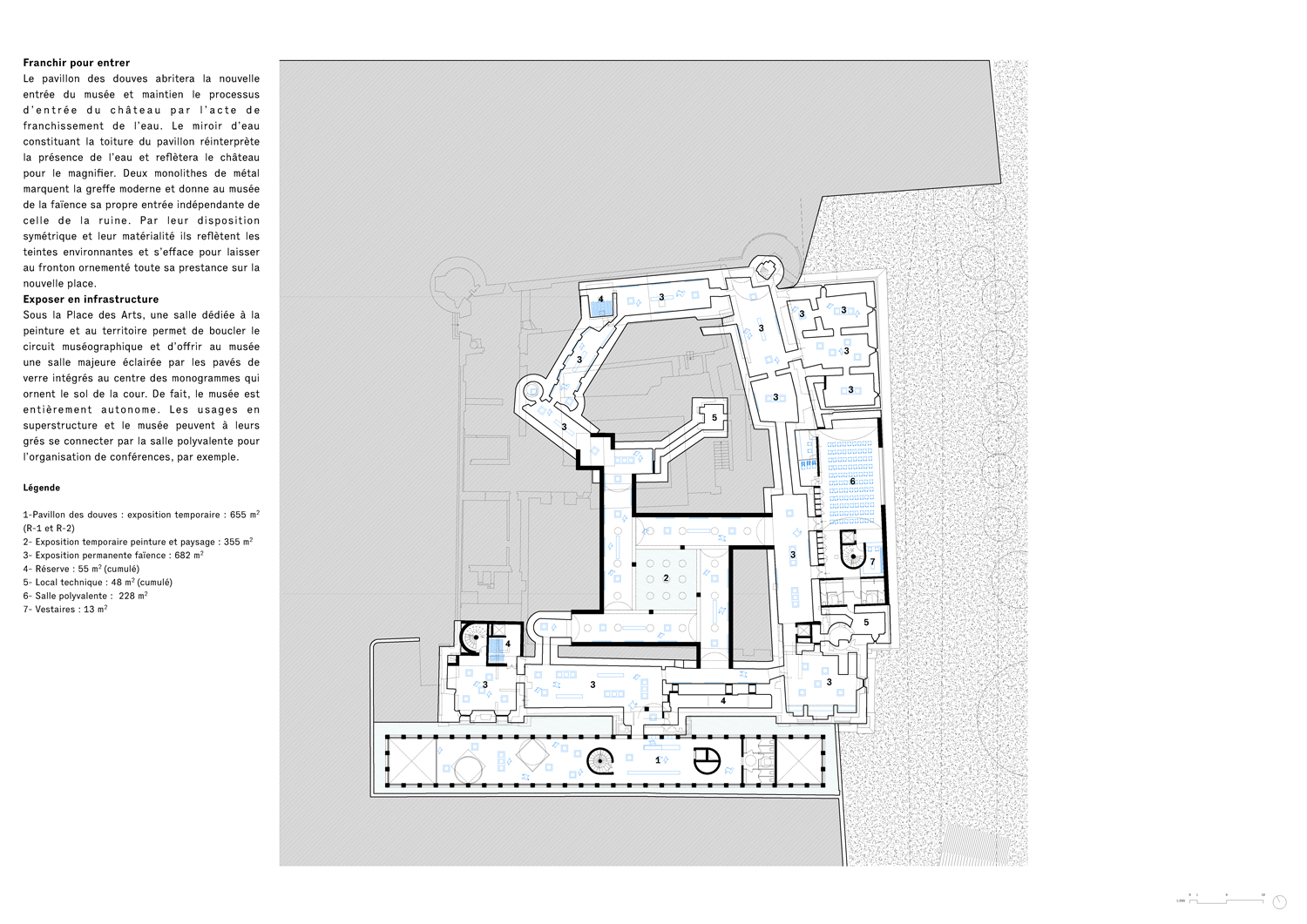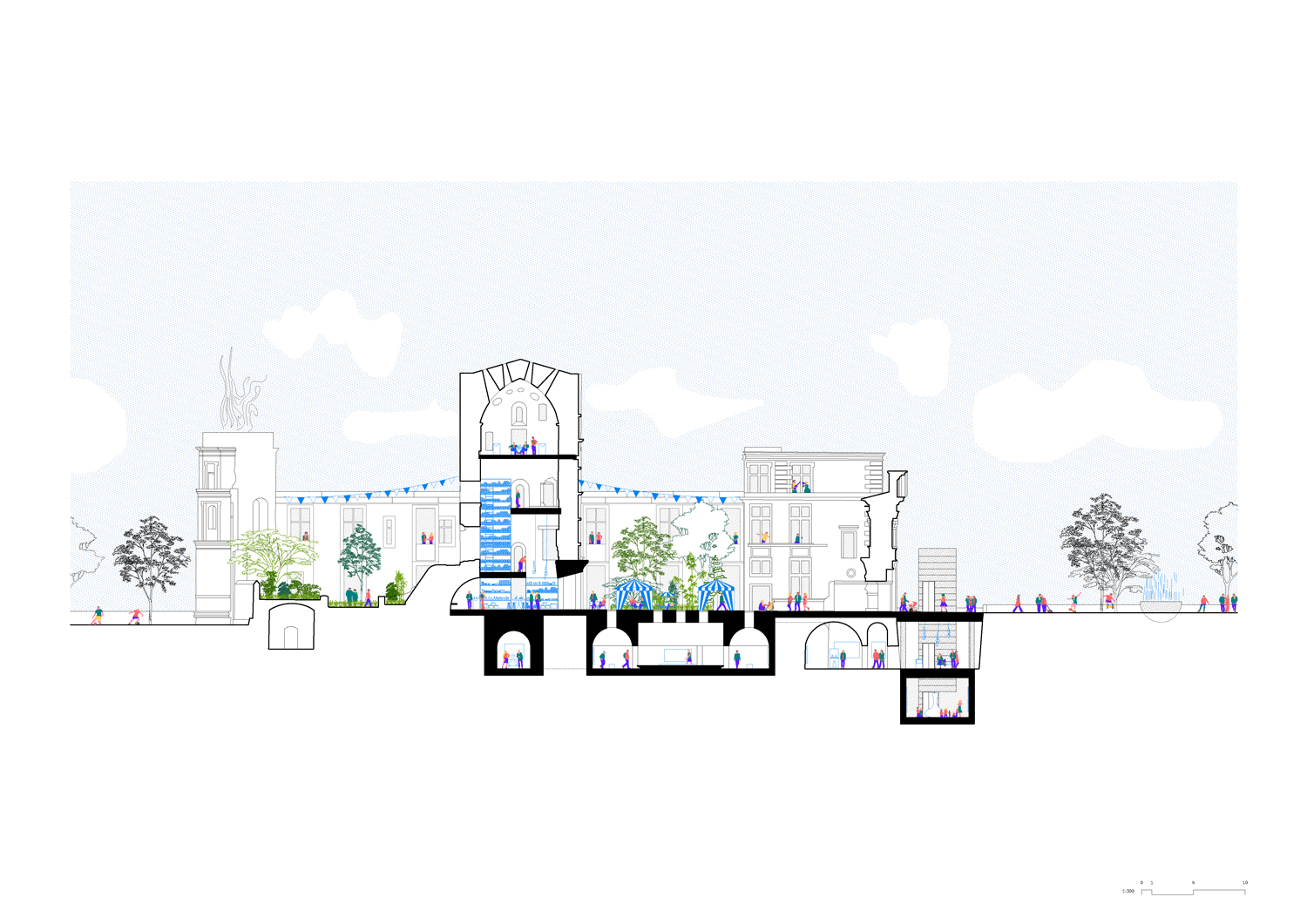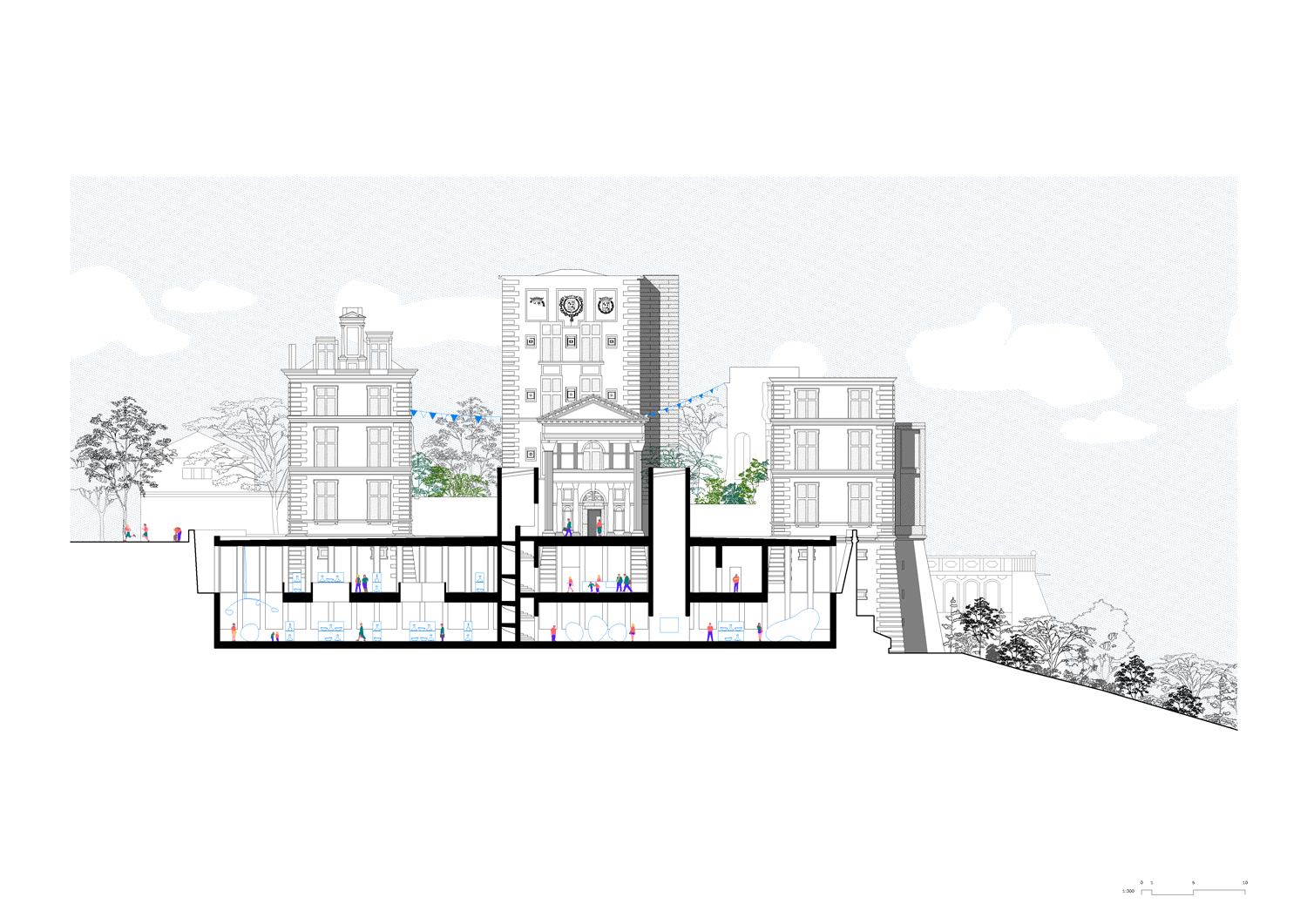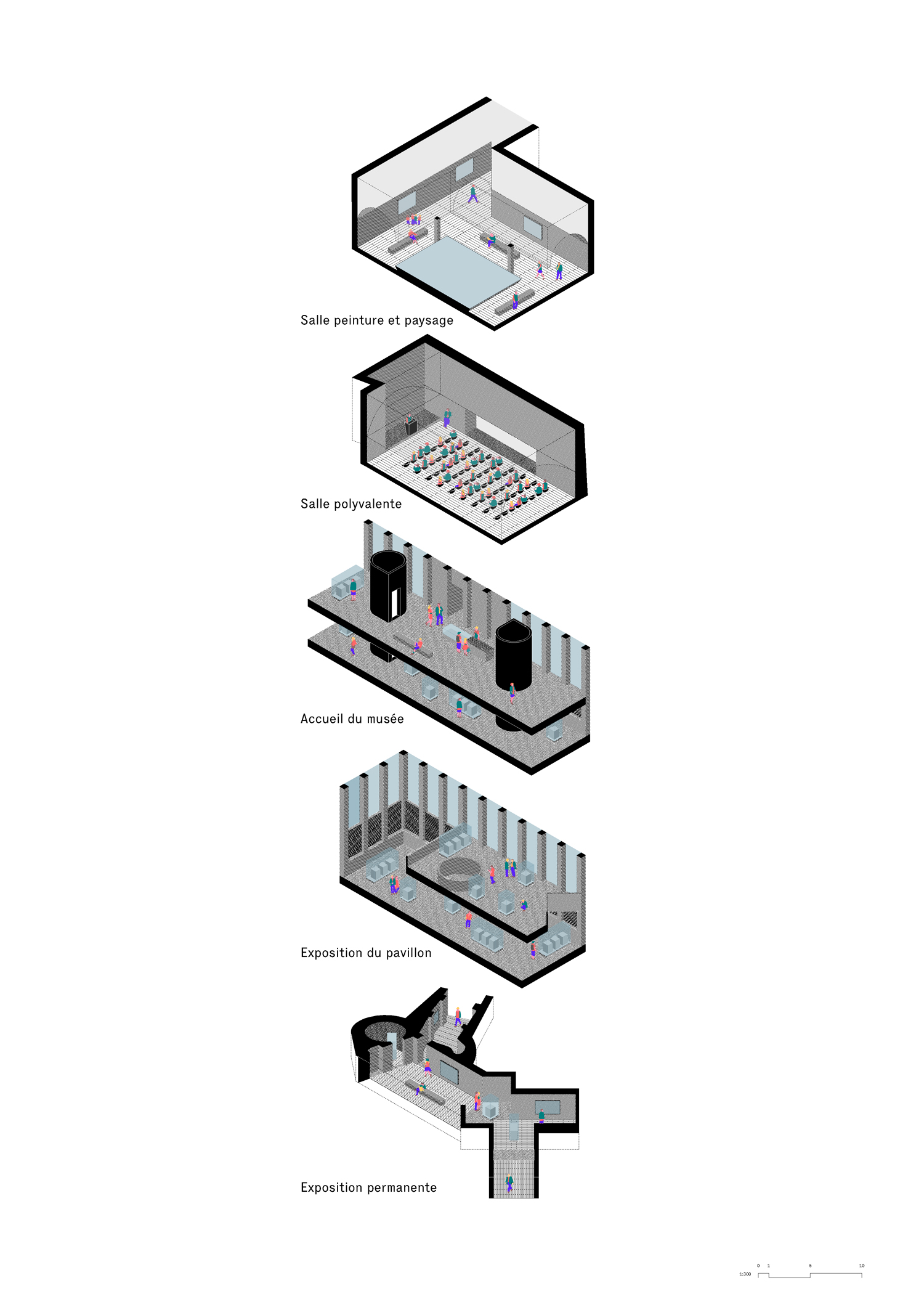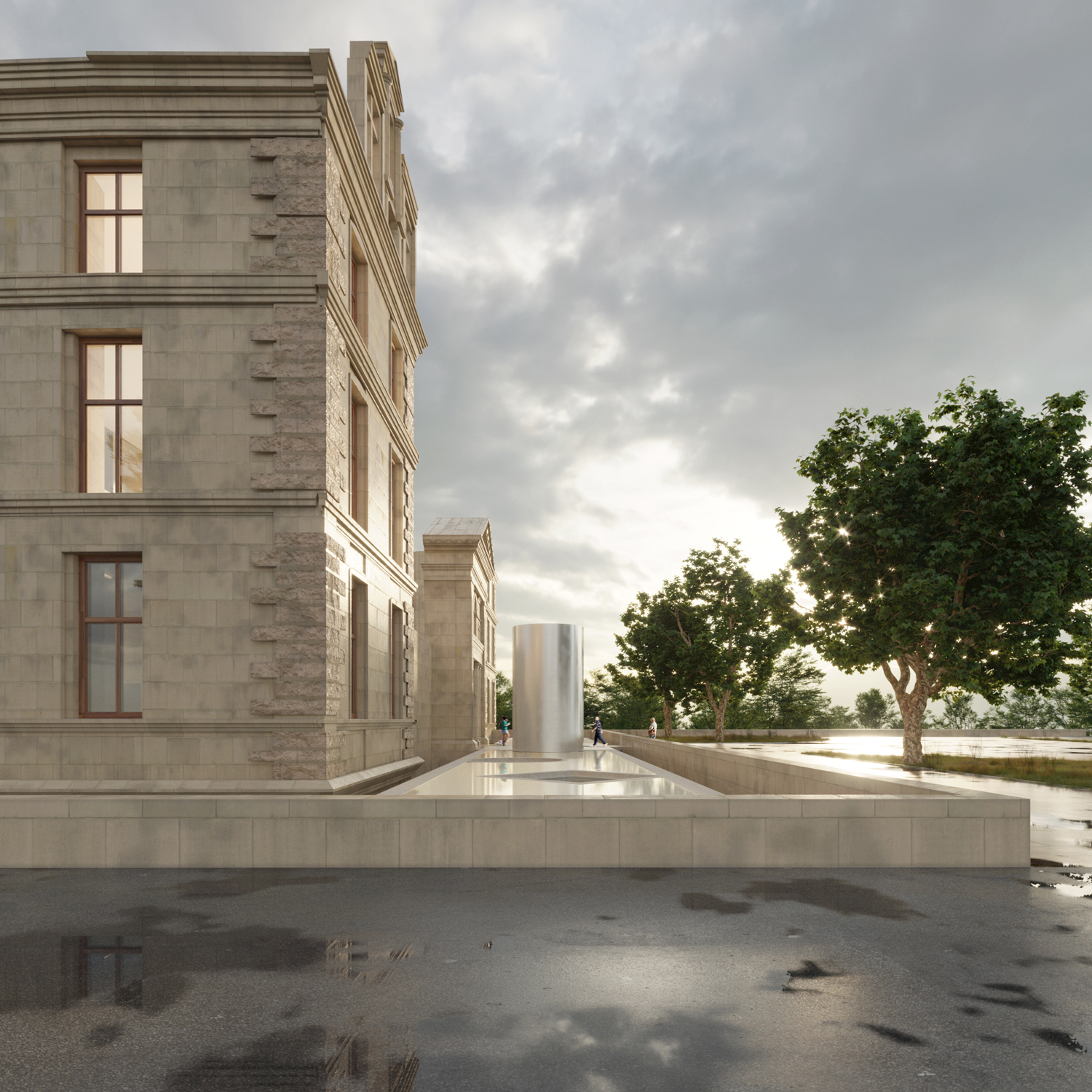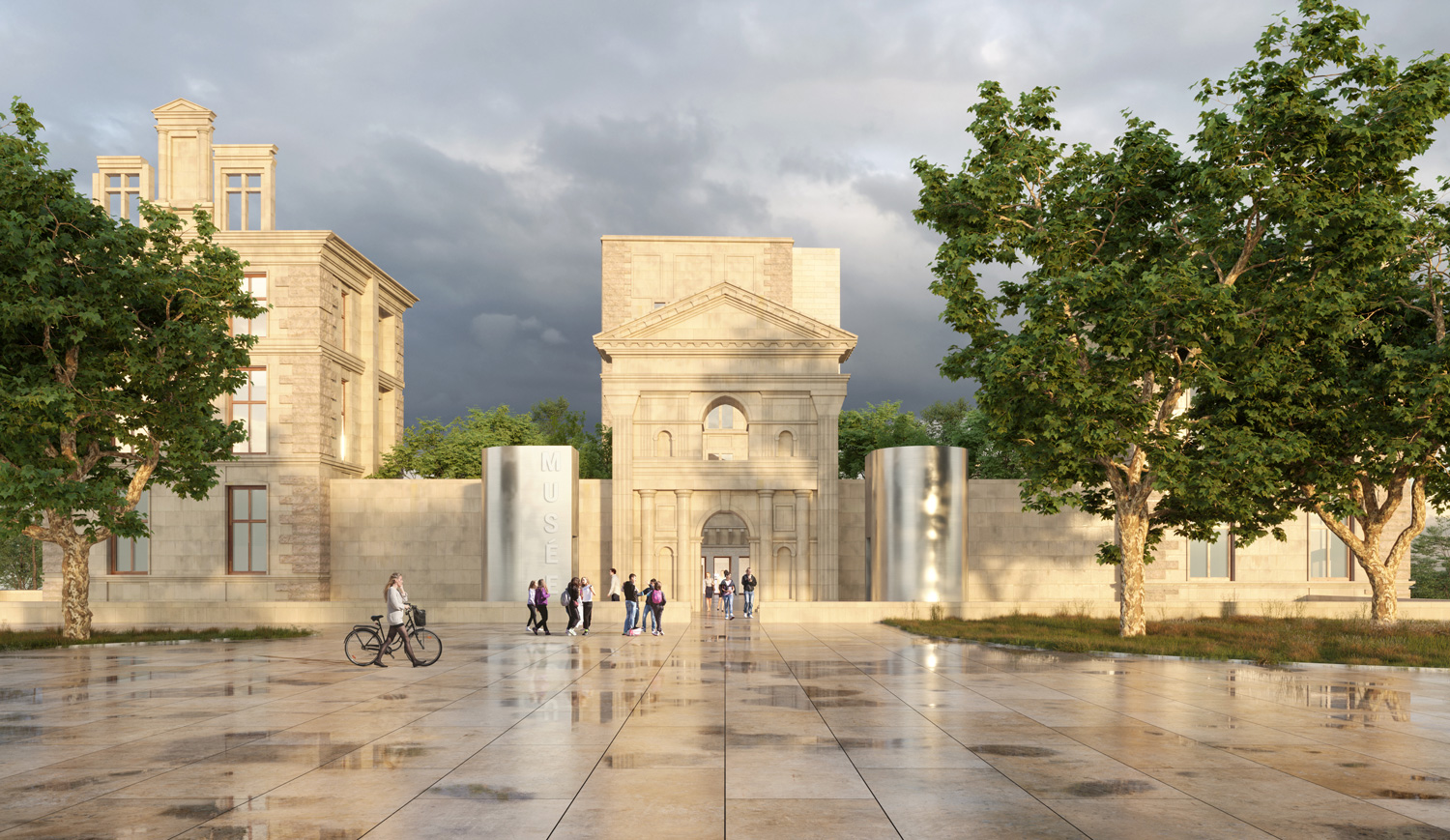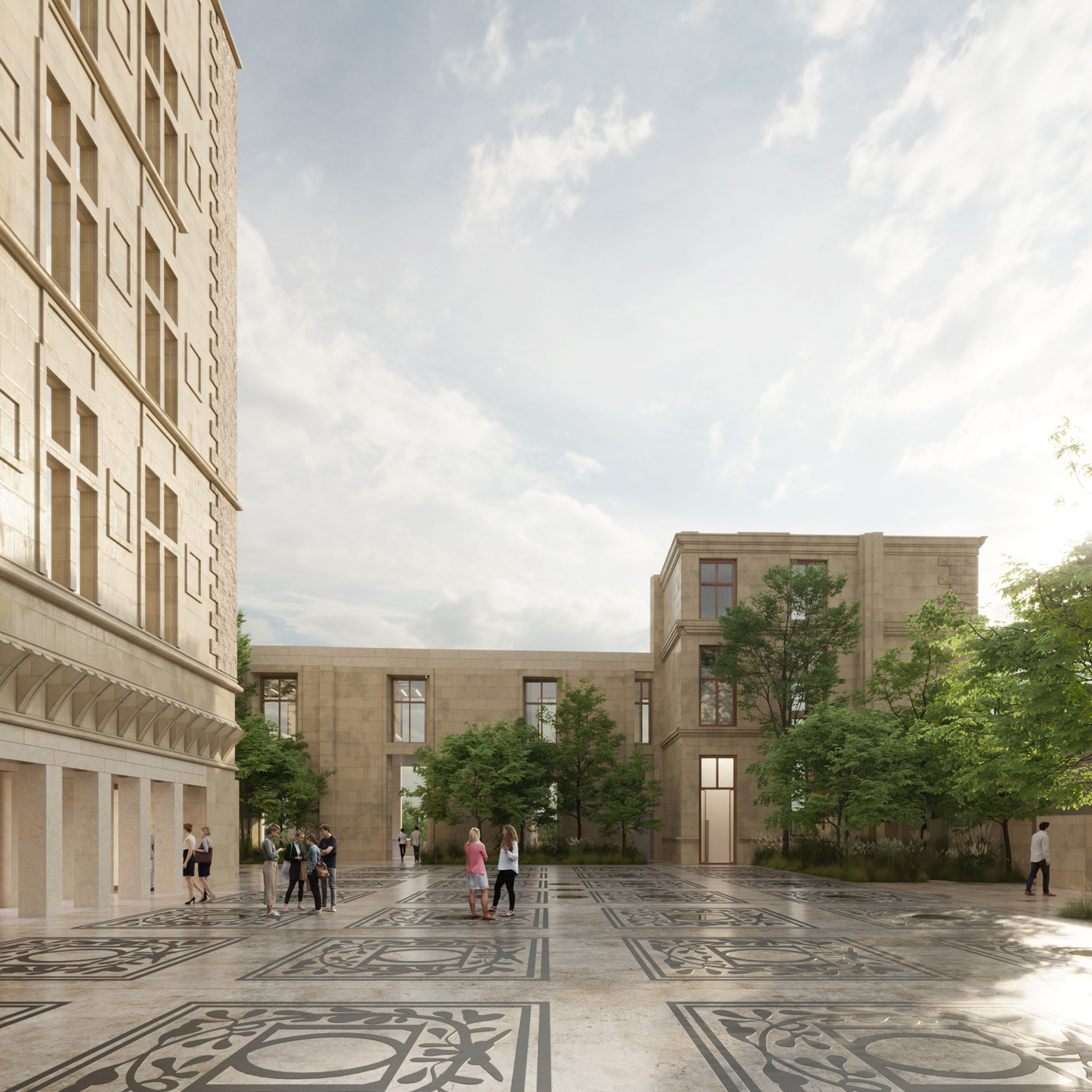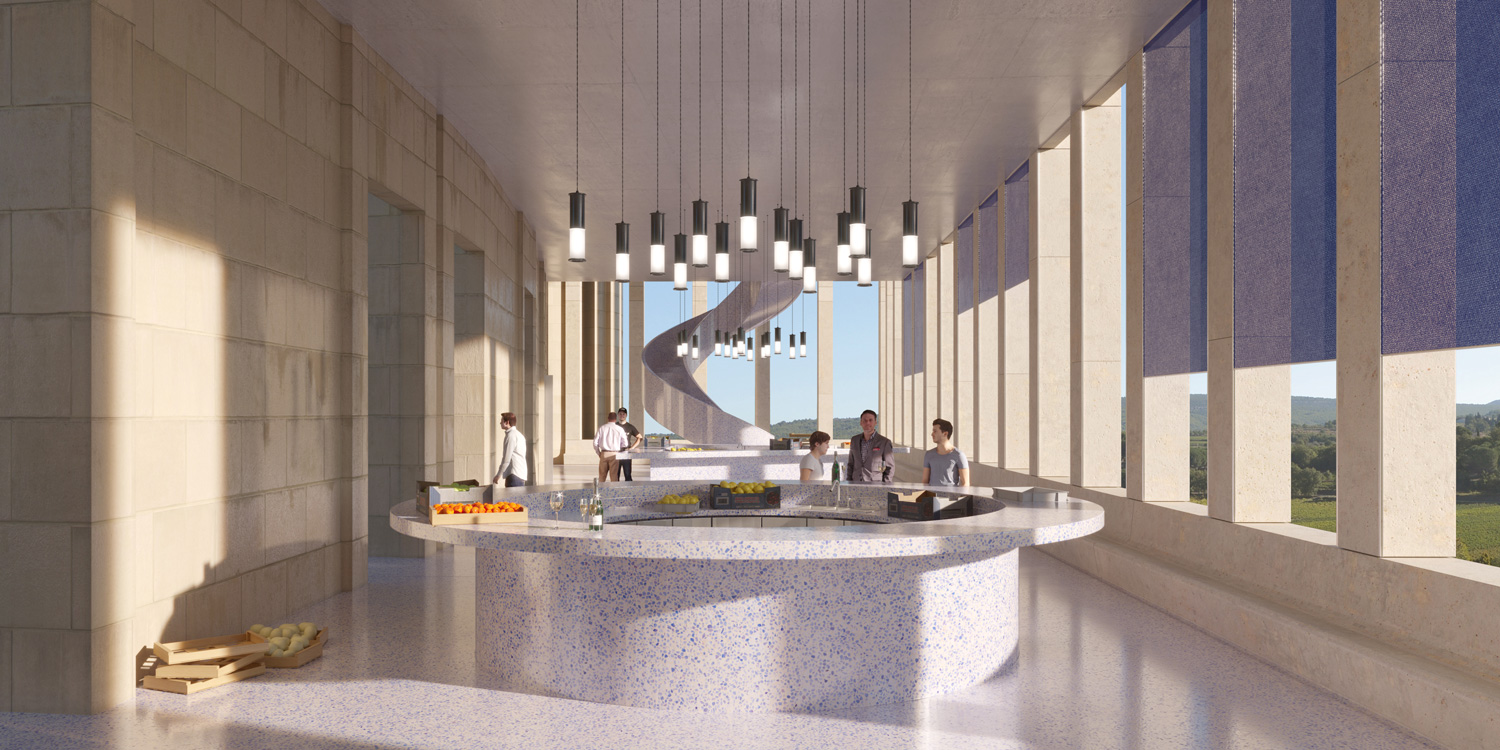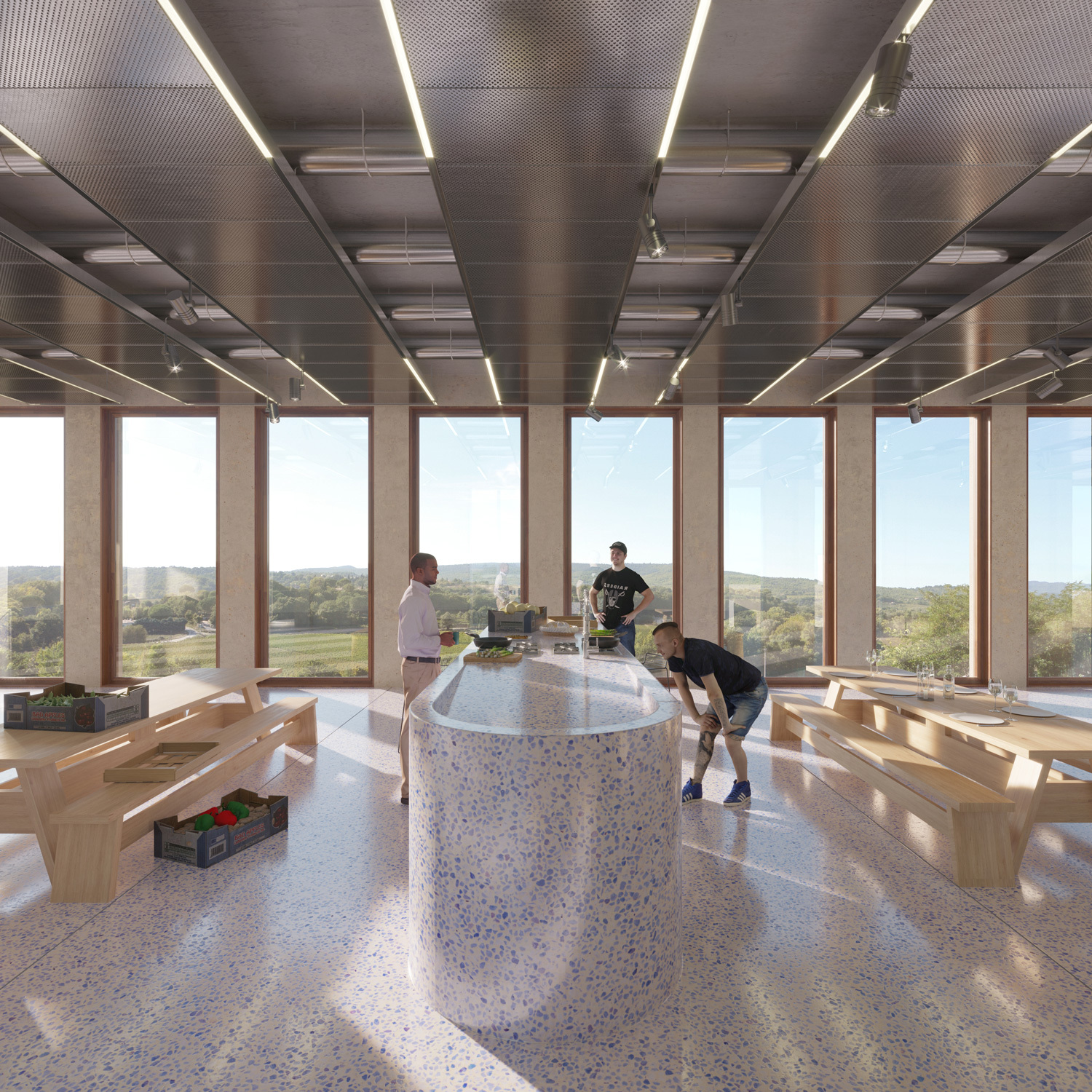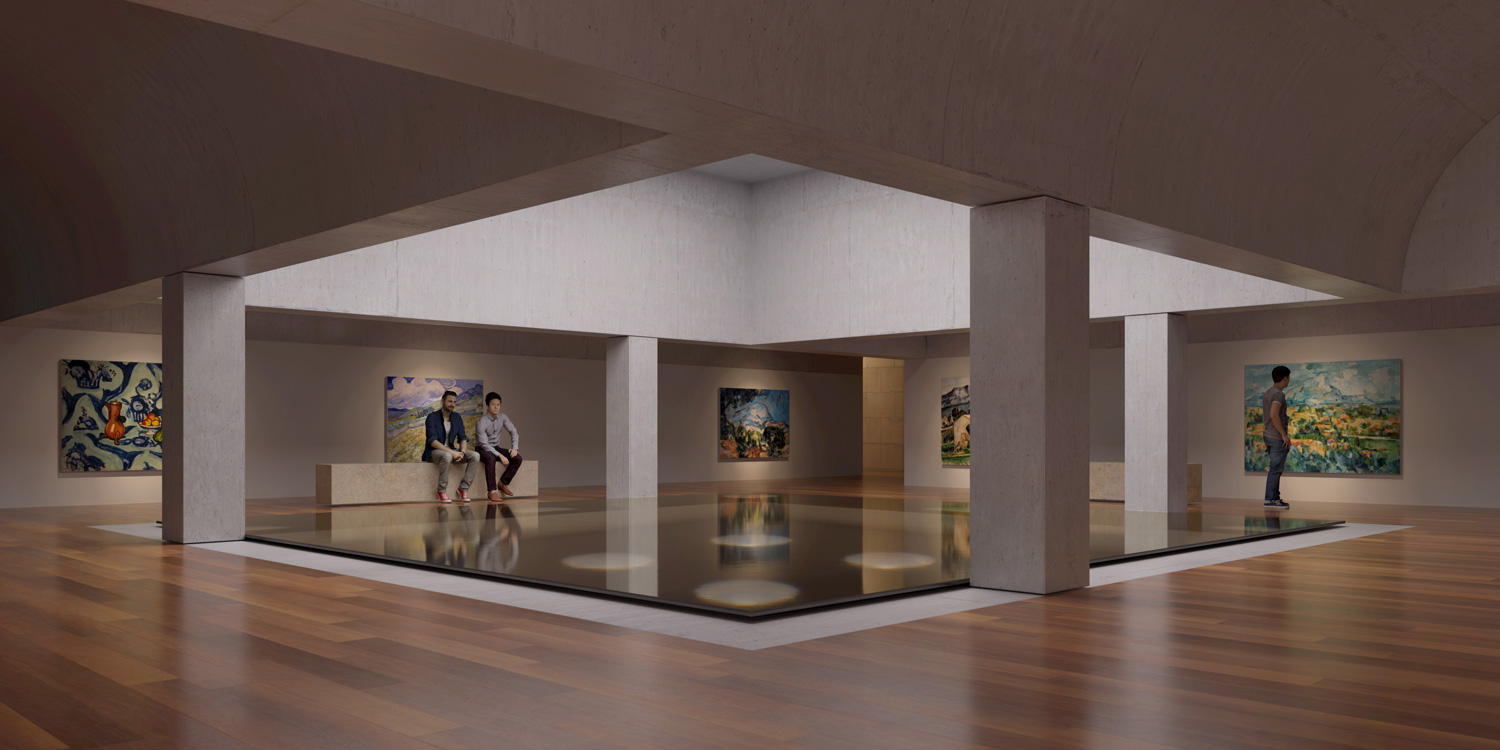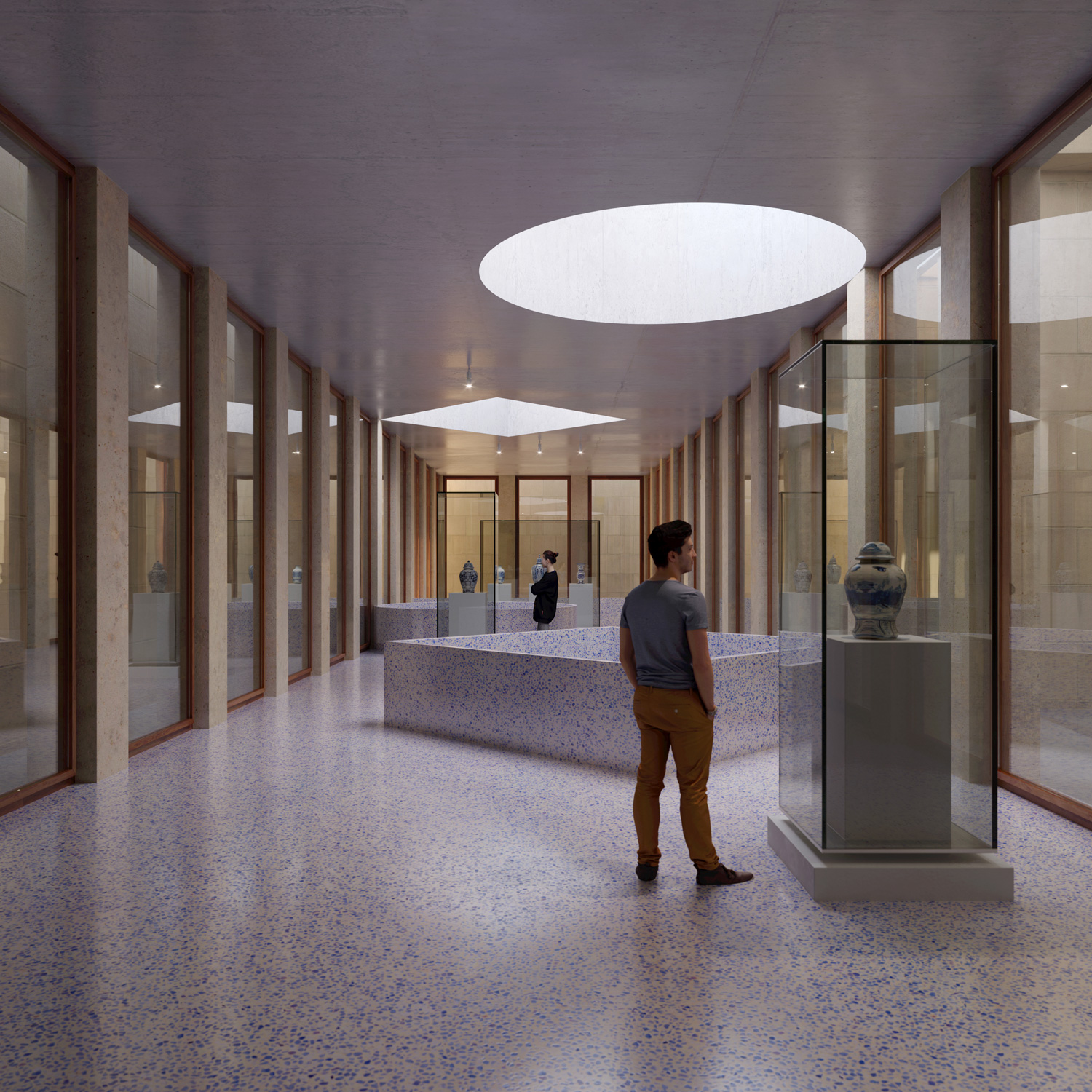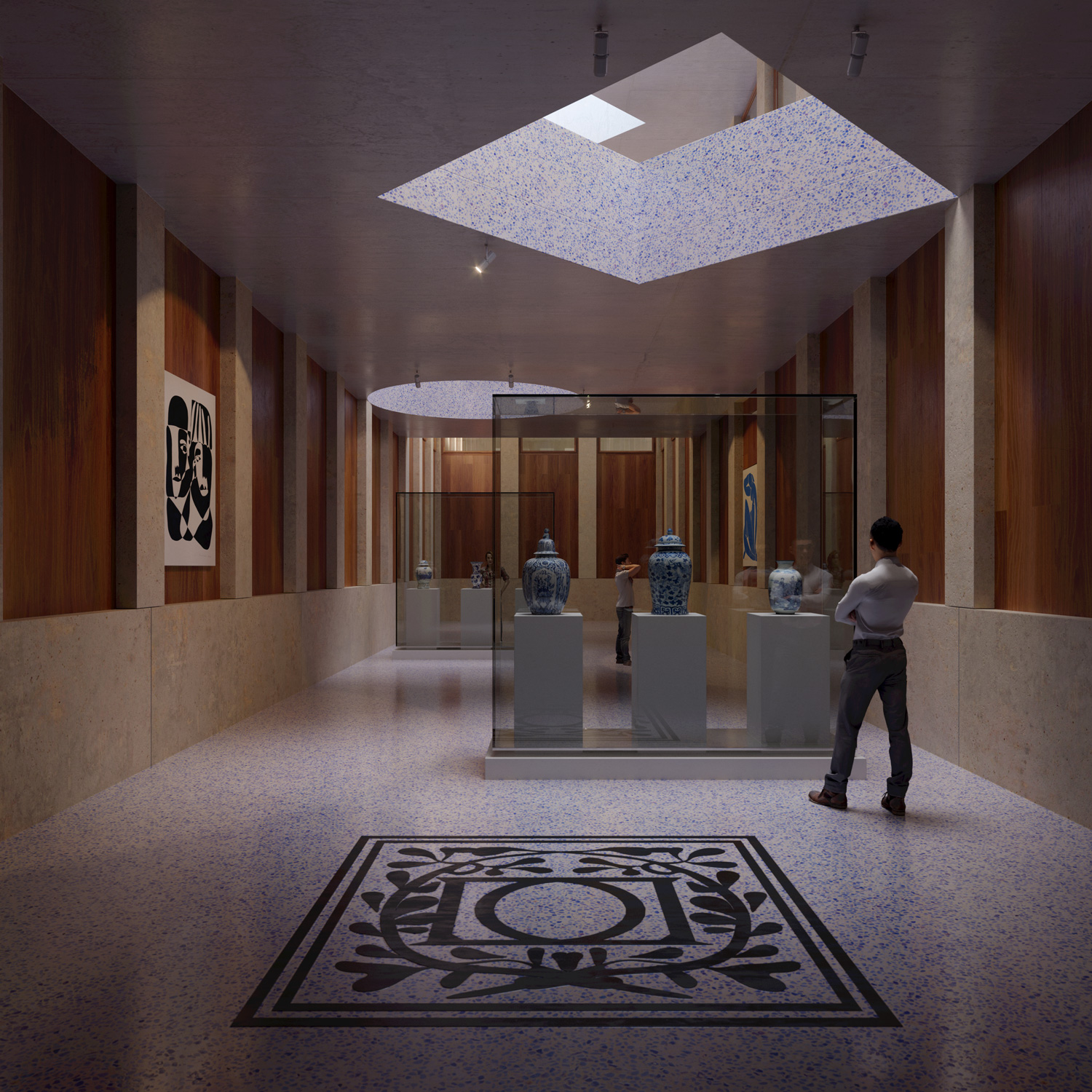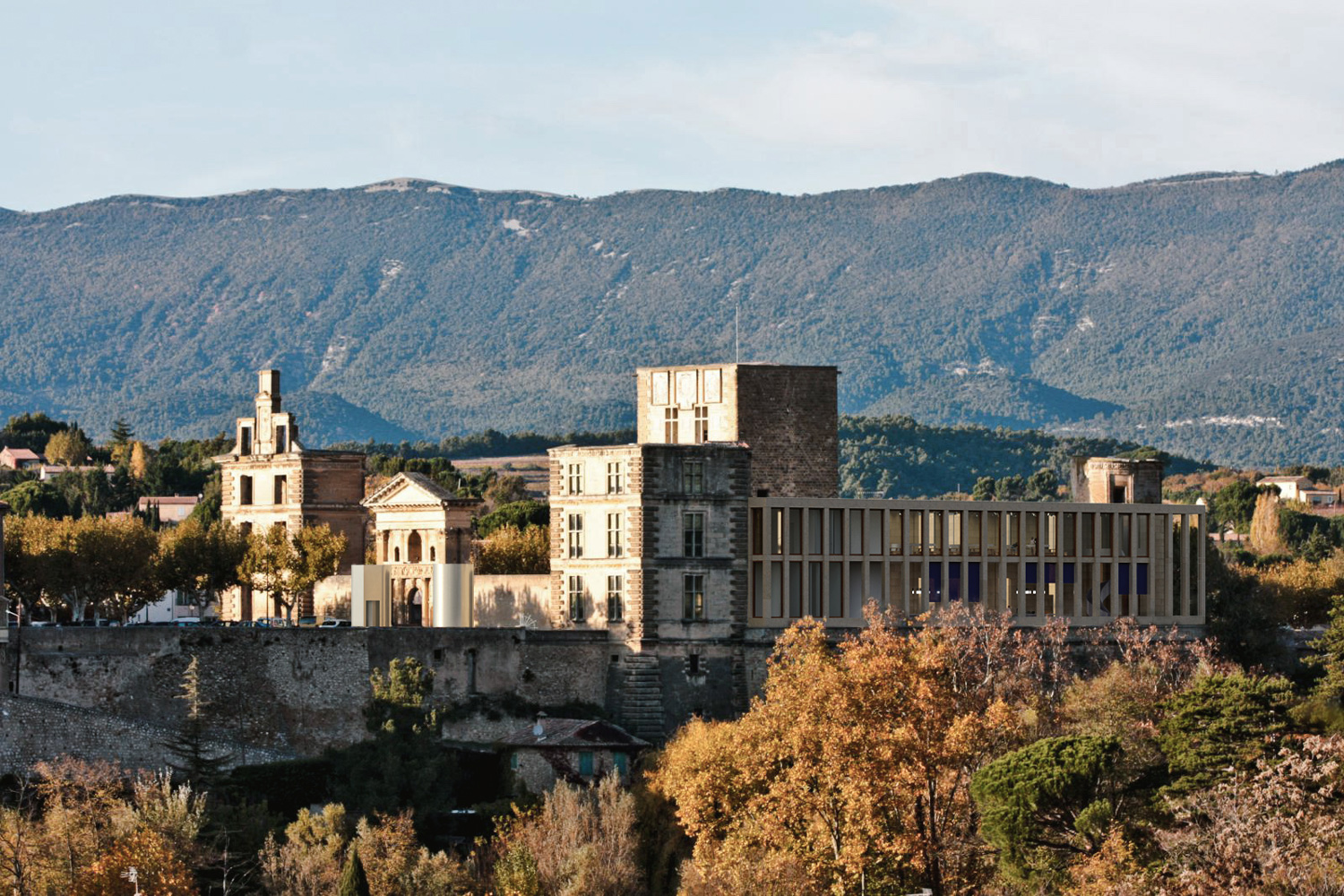2686-FRO-FR-2020
Client: Prix W
Status: Competition (2020)
Location: La Tour-d’Aigues, France
Coordinates: 43.726676, 5.550164
Climate: Temperate, Mediterranean
Materials: Stone, Concrete
Environment: Old town
Visualizer: Studio
Scale: 5.252 ㎡ Medium
Types: Commercial, Refurbishment, Winery
In the common imagination, ruin remains this magical moment where vegetation regains its rights at the expense of stone, uses and luxury. If architecture survives and transcends chaos, it takes its strength in this contrast between the absence of man and the presence of fauna and flora.
This is why, in an antinomic way, the first act of the project was that of defining the void: giving way to the lyrical imagination, and maintaining this representation of ruin by a large wild garden. A series of gardens of aromatic and edible essences appropriate the place to generate this particular and poetic atmosphere: the hortus conclusus figure of religious art.
Rebuilding the castle identically did not seem to make sense to us. On the other hand, revealing the central square, by a smooth and immaculate floor for all use, does bow to the old courtyard. This new place offers a multiplicity of appropriations linked to the proposed program: potters ‘market, farmers’ market, cultural performances, communal festivals …
The garden constitutes in our society this intimate place where we receive, share and take care. Without building within the walls of the castle, this floor offers a space conducive to the exchange of know-how, the continuity of traditions and awareness of everything that constitutes the richness of a territory.
A path crisscrosses the project to reveal all the faces of the ruin and revolves around the keep that has become a wine store. A majestic vertical in this iconic void of a bygone era. Visitors are free to stroll there and discover past history.
The North-West tower houses a cylinder for collecting rainwater which will irrigate the garden, while a bread oven will nestle in the North-East. To the south-east, the existing tower is being rehabilitated to accommodate the tourist office and a local business incubator. In the west, it will be renovated like its counterpart in order to house rehearsal rooms and premises for the theater association.
A pavilion dedicated to the earthenware museum finds its place in the old moat. Its entrance is indicated by two steel monoliths which frame the pediment. Its water-mirrored roof reinterprets the dark water that has now disappeared and gives it a more welcoming face that will reflect the castle the better to magnify it. The exhibition is developing into the existing infrastructure and a major room will complete the museography in a didactic way.
To the east, a massive stone pilaster and entablature structure refers to classical architectural codes to accommodate local culinary know-how. The grafting is silent and will over time fade in favor of a global architecture mixing ruin and modernity. It offers a gourmet hall for producers and a receptacle for the theater of life: a place of exchange and conviviality that can swallow up the central square in the summer. Above the gastronomic workshops will link the products and the culinary art while enjoying a plunging and peaceful view over the valley: an intimate landscape.
